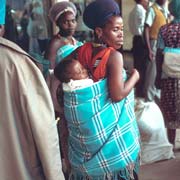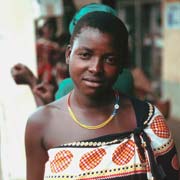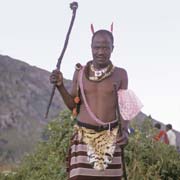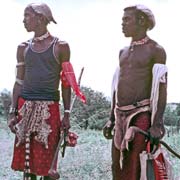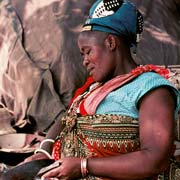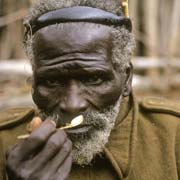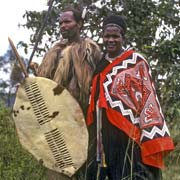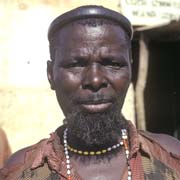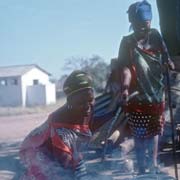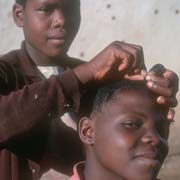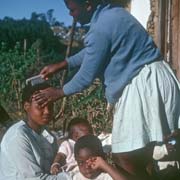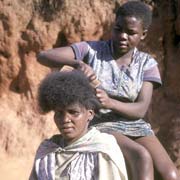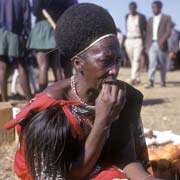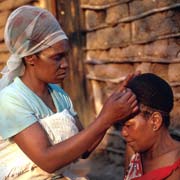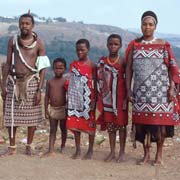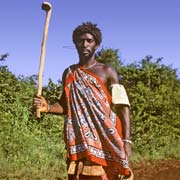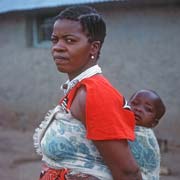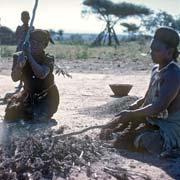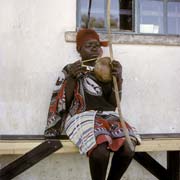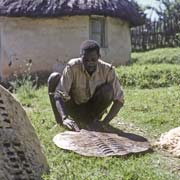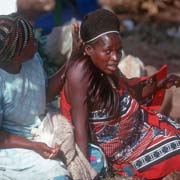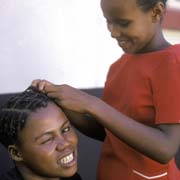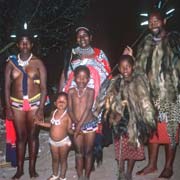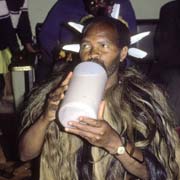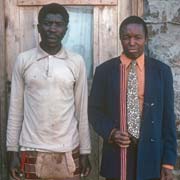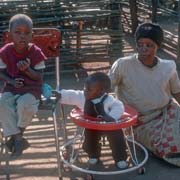Photos of the People of Swaziland
The People of Swaziland
The Swazi people are distinguished by their friendliness and were always more than happy to have their photo taken. These photos give a broad picture of Swazi people, their family life, at work and at play.
you may then send it as a postcard if you wish.
Although store-bought "European" dress is widespread, many would wear traditional clothing, the "emahiya", a toga-like garment, usually red, white and black, printed with bold designs and worn by both men and women. These are in two parts: the top part, "umhelwane", is a large piece of fabric tied with a knot at the shoulder and the bottom part is called "lihiya" and wrapped around the waist: "emahiya" is plural of "lihiya". The men would wear "emajobo", a sporran-like loin covering made from animal hide, over their lihiya. Married men would wear more than one lihiya at the time.
Married women would wear the "sidvwaba", a cow-hide apron and their hair in a beehive style, called "sicolo"; they would help each other with teasing their hair into this shape. Old men often would wear the "umbodze", a head ring; in the old days this used to be fashioned from bees wax. The Swazi are masters in making themselves look good during the many different traditional ceremonies that take place.





